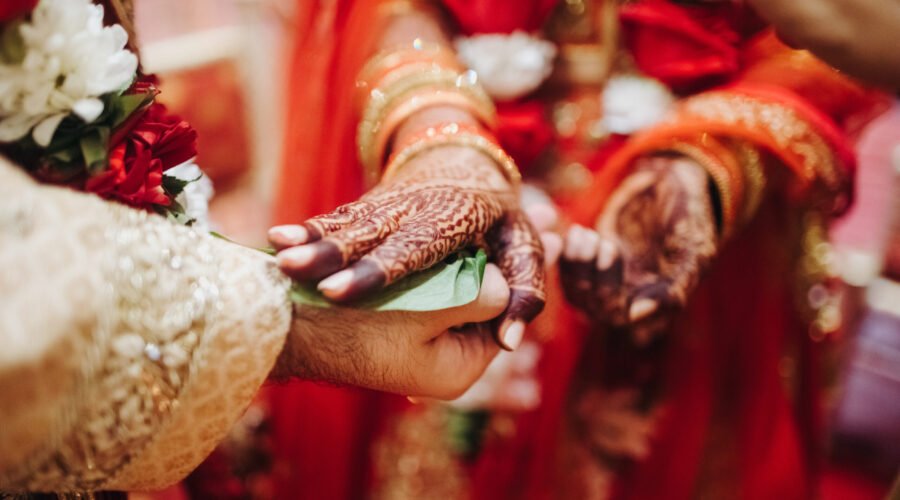The Meaning of Saptapadhi in Hindu Marriage
Numerous rites and customs are part of the Hindu wedding ceremony, which is a customary and sacred event. The Saptapadi ritual is one of the most important and essential parts of Hindu marriages. It involves the bride and groom exchanging seven vows in front of a sacred fire.
A beautiful and meaningful representation of a couple’s marriage journey is the Saptapadi ceremony. The words “seven” (Sapta) and “steps” (Padi) are the word’s Sanskrit roots. The bride and groom exchange seven vows with each other, which are represented by the seven steps they take together during the ceremony.
The Saptapadi ceremony comes after the Kanyadaan ritual, in which the bride’s father gives her away to the groom. The bride and groom are facing each other, a sacred fire glowing in front of them. Reciting mantras, the Hindu priest known as the Pandit guides the couple through the process.
Holding hands, the bride and groom make seven circuits around the sacred fire, each representing one of the seven vows they exchange. At each step, the Hindu priest utters a mantra, which the couple mimics. The pair promises to uphold one another’s integrity, love and support one another, share each other’s happiness and sorrows, and be there for one another during life’s journey.
Seven promises:
The first vow is a friendship vow, in which the bride and groom agree to support and be friends with one another through good times and bad.
The couple makes a commitment to appreciate each other’s originality and uniqueness in their second vow, which is one of mutual respect.
The third vow is a sharing vow, in which the couple promises to support one another during good times and bad, and to share their joys and sorrows.
The pledge of love, which is the fourth vow, promises the couple to love each other unconditionally and support one another during difficult times.
The fifth vow is a prayer for both fertility and the well-being of the couple’s future children.
Similar to this, in the sixth vow—the vow of allegiance—the couple promises to maintain each other’s faithfulness and loyalty for the rest of their lives.
The bride and groom make a promise to remain each other’s life partner and to stick by each other through thick and thin in the seventh and final vow, the vow of togetherness. The Hindu priest pronounces the couple to be husband and wife after the seventh vow, at which point they are regarded as married.
An important and highly respected Hindu wedding custom, the Saptapadi ceremony symbolizes the joining of two souls via marriage. The vows the couple exchanges represent their journey through married life together as well as their devotion and commitment to one another. The ceremony is led by a Pandit, a Hindu priest, who also recites the mantras and gives the couple instructions.
Conclusion: Saptapadhi Meaning in Hindu Marriage
In conclusion, the Saptapadi ceremony is a beautiful and important ritual in Hindu weddings. It represents the seven vows that the bride and groom make to one another. It is a solemn and significant occasion in their life and symbolizes the couple’s commitment to one another. The ceremony, conducted by a Pandit or Hindu priest, ushers in a new chapter in the lives of the newlyweds.



